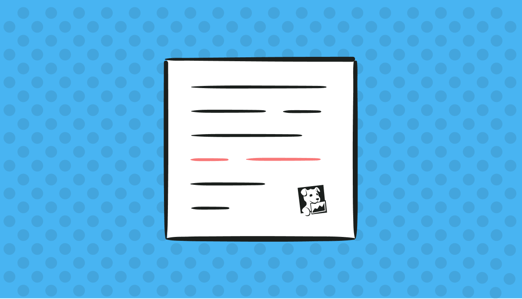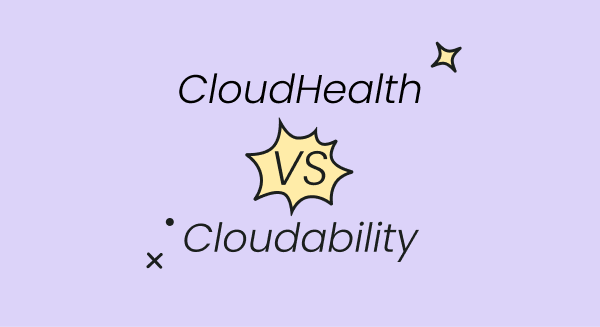
Introduction
Datadog is a widespread cloud-based monitoring and analytics platform that empowers businesses to gain real-time insights into their applications and infrastructure. One crucial aspect of evaluating Datadog as a solution is understanding its pricing model. If you're wondering, how much does Datadog cost, we will explore the factors that influence Datadog's pricing and provide insights into the cost structure, along with considerations for managing usage-based pricing tools like Datadog within the context of FinOps.
How Much Does Datadog Cost: Understanding Datadog's Pricing Model
Datadog follows a subscription-based pricing model, providing customers with flexibility and scalability based on their requirements. If you're interested in understanding the potential costs, you can use Datadog Cost Estimator. Let's delve into the key factors that determine Datadog's cost.
Plans and Features
Datadog offers different plans designed to cater to various needs:
A) Free Trial: Datadog provides a 14-day free trial that allows users to experience its core features and functionality. This is an excellent opportunity to test drive the platform and understand how much does Datadog cost with insights from the Datadog Cost Estimator, as well as its capabilities before committing to a paid plan.
B) Pro Plan: The Pro plan is the most popular option, offering various essential monitoring and analytics features. It provides real-time performance tracking, custom dashboards, and integrations with numerous technologies and services. The pricing for the Pro plan varies based on usage factors outlined below.
C) Enterprise Plan:
For organizations with advanced requirements and larger infrastructure, Datadog provides the Enterprise plan. It includes additional features like APM, increased log retention, and enhanced support, tailored to meet the demands of complex environments. The Enterprise plan pricing is based on a custom quote, depending on specific needs and can be estimated using the Datadog Cost Estimator.
Factors Influencing Datadog's Cost
A) Monitored Hosts:
Datadog's pricing revolves around the number of monitored hosts. A host refers to an individual instance of infrastructure being monitored, such as servers, cloud instances, virtual machines, and containers—the more hosts you choose to monitor, the higher the pricing tier.
Example: Let's say you want to monitor 20 servers and 10 cloud instances. Your pricing would be based on the total count of 30 monitored hosts.
B) Log Retention:
Log retention refers to the duration for which logs are stored and accessible for analysis within the Datadog platform. The longer you need to retain logs, the higher the cost. Datadog provides various log retention options, ranging from 15 days to 365 days, depending on the selected plan.
Example: If you require logs to be stored for 30 days, the cost might be different than if you need logs to be retained for the maximum 365-day period.
C) Additional Features:
Datadog offers optional features that may impact pricing:
- APM Monitoring: Datadog's Application Performance Monitoring (APM) capabilities allow businesses to gain insights into application behavior, performance, and troubleshoot issues. Enabling APM monitoring comes at an additional cost, as it provides advanced functionality beyond standard monitoring features.
- Integrations and Add-ons: Datadog seamlessly integrates with a wide range of technologies and services, such as cloud providers, databases, container platforms, and more. Depending on your selected plan, some specific integrations or add-ons may have associated costs.
Example: Integrating Datadog with your AWS infrastructure is typically included in the Pro plan at no additional cost. However, certain specialized integrations may have additional charges.
Managing Usage-Based Pricing Tools and FinOps
Managing the costs associated with usage-based pricing tools like Datadog can be complex, particularly as infrastructure scales and monitoring needs evolve. This is where FinOps (short for Financial Operations) comes into play. FinOps is a discipline that combines financial management principles with cloud usage to optimize costs and maximize value. With the help of FinOps practices and tools, organizations can set budget thresholds, track costs, identify potential cost savings, and ensure efficient resource allocation within the context of monitoring tools like Datadog.
Example: An e-commerce platform experiences rapid growth and significantly increases the number of monitored hosts. Implementing FinOps practices allows the organization to closely monitor usage, analyze cost trends, and optimize Datadog's features and resources to match their needs. With FinOps, the company maintains control over their Datadog expenses and identifies optimization opportunities while gaining valuable insights from the monitoring data.
Conclusion
When contemplating the cost of Datadog, it is essential to evaluate factors such as the number of monitored hosts, log retention needs, additional features like APM, and any integrations required. Fortunately, practices like FinOps can help organizations effectively manage and optimize usage-based pricing tools like Datadog. By considering these factors and implementing FinOps strategies, businesses can leverage Datadog's robust monitoring and analytics capabilities while maintaining cost efficiency and maximizing the value they derive from the platform.
Read More About Datadog Costs
Part I: Getting Around the Datadog Pricing Model
In the first part of the blog series, written by our talented Software Engineer, Boris Cherkasky, we explore the question: "Why you should care about your Datadog costs?" Boris dives into crucial aspects of Datadog costs, emphasizing the importance of understanding them. He also sheds light on how Datadog pricing works, shares his experiences and lessons learned as a Datadog user, and discusses strategies to crack the Datadog cost/usage model. Moreover, Boris provides valuable insights on how to effectively gain control over Datadog costs.
Read more: Part I: Getting Around the Datadog Pricing Model
Part II: The Magic That Is In Datadog Pricing
In the second part of the blog series written by our talented Software Engineer, Boris Cherkasky, we cover how in general Datadog products get billed, and uncover the factors that sometimes lead to unexpected end-of-month invoices.
Read more: Part II: The Magic That Is In Datadog Pricing
Part III: Data Puppy - Shrinking Data Dog Costs
In the third part of the blog series written by our talented Software Engineer, Boris Cherkasky, you will discover the key factors to consider for effectively managing your Datadog costs. Boris will guide you through the process of uncovering the hidden potential for Datadog optimization, enabling you to make the most out of this powerful platform.
Read more: Part III: Data Puppy - Shrinking Data Dog Costs
Datadog Pricing
Discover the intricacies of Datadog pricing, explore key features such as debug, custom metrics, and synthetic monitoring, and provide strategies to optimize costs without compromising on functionality.
Read more: Datadog Pricing Explained
Datadog Debug Pricing
Datadog Debug offers developers the remarkable ability to streamline bug resolution and optimize application performance. To fully harness the potential of this invaluable tool, it is important to grasp its pricing structure, evaluate the value of its advanced features for your specific debugging requirements, and identify key elements that influence Debug pricing.
In this blog post, we dive deep into these essential aspects, providing you with the knowledge needed to make informed decisions and leverage Datadog Debug effectively for enhanced development workflows.
Read more: Understanding Datadog Debug Pricing
Datadog Custom Metrics Pricing
Datadog custom metrics empower businesses to capture and analyze application-specific data points, tailored to their unique use cases. The true potential of Datadog custom metrics lies in the precise insights they offer into application performance. Therefore, comprehending the product's pricing structure and evaluating the value of advanced features becomes crucial in making informed decisions to optimize costs effectively.
Read more: Understanding Datadog Custom Metrics Pricing
Datadog Synthetic Pricing
Integrating Datadog Synthetic Monitoring into your monitoring and observability strategy is a vital step for organizations seeking to proactively monitor and optimize their applications, while ensuring exceptional user experiences and mitigating risks.
In this blog, we will dive into the Datadog Synthetic pricing structure and explore the key factors that influence these costs. By understanding these aspects, you will be equipped to make informed decisions and leverage the full potential of Datadog Synthetic Monitoring.
Read more: Understanding Datadog Synthetic Pricing
Optimizing Datadog Costs
Discover effective cost optimization strategies for utilizing Datadog to its full potential without incurring unnecessary expenses. By implementing these best practices, organizations can achieve maximum efficiency with Datadog while ensuring a high level of observability. Learn how to reduce monitoring costs without compromising on the quality of insights and monitoring capabilities.
Read more: Optimizing Datadog Costs










